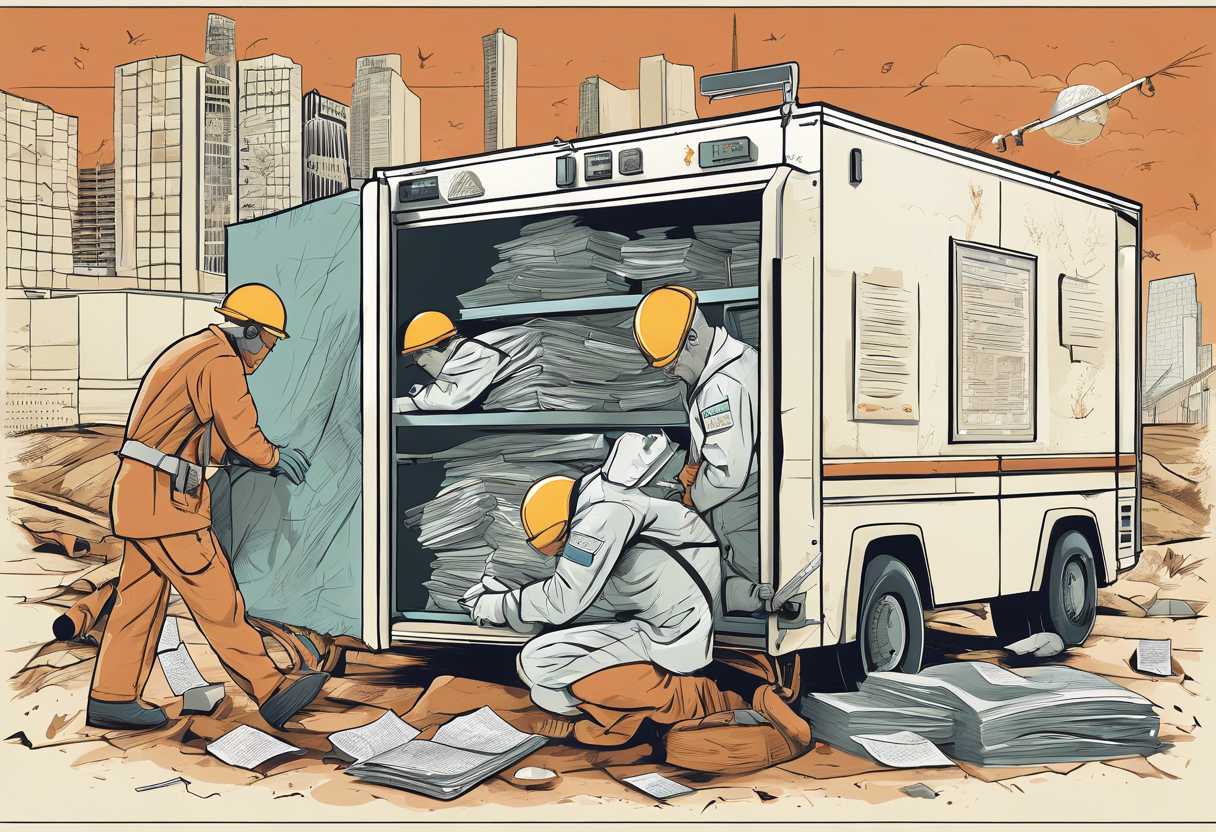Postmortem documentation is a critical aspect of business operations, providing valuable insights into incidents, their resolution, and opportunities for continuous improvement. In this blog post, we will explore the importance of postmortem documentation in business operations, best practices for creating effective postmortem documentation, and how it improves incident response and resolution. We will also delve into leveraging postmortem documentation for continuous improvement and learning, as well as integrating it into Agile and DevOps practices. Join us as we uncover the significance of postmortem documentation and its impact on business operations.
The Importance of Postmortem Documentation in Business Operations
Enhancing Learning and Improvement
Postmortem documentation in business operations plays a crucial role in enhancing learning and improvement within an organization. By documenting the details of a project or operation, including what went well and what didn’t, teams can learn from their experiences and make necessary adjustments for future endeavors. This documentation serves as a valuable resource for identifying patterns, trends, and areas for improvement, ultimately leading to more efficient and effective business operations.
Facilitating Knowledge Transfer
Effective postmortem documentation facilitates knowledge transfer within an organization. When team members move on to new projects or roles, having detailed documentation of past operations allows for a smooth transition of knowledge and insights. This ensures that valuable lessons learned from previous experiences are not lost, and that new team members can benefit from the wisdom gained through past endeavors.
Improving Accountability and Transparency
Postmortem documentation promotes accountability and transparency within business operations. By documenting the details of a project, including decisions made, challenges faced, and outcomes achieved, teams can hold themselves accountable for their actions and decisions. This transparency also fosters trust and collaboration among team members, as everyone has access to the same information and can work together to address any issues or challenges that arise.

Best Practices for Creating Effective Postmortem Documentation
Importance of Postmortem Documentation
Postmortem documentation is a crucial part of any project or incident management process. It provides a detailed account of what went wrong, what worked well, and what could be improved for future reference. Effective postmortem documentation helps teams learn from their mistakes, prevent similar issues from occurring in the future, and continuously improve their processes.
Key Components of Effective Postmortem Documentation
When creating postmortem documentation, it’s important to include the following key components:
- Summary: A brief overview of the incident, including its impact and severity.
- Timeline: A chronological sequence of events leading up to and following the incident.
- Root Cause Analysis: An in-depth analysis of the underlying causes of the incident.
- Actions Taken: A detailed account of the steps taken to mitigate the incident and prevent recurrence.
- Lessons Learned: Reflection on what worked well, what didn’t, and what can be improved for the future.
Best Practices for Writing Postmortem Documentation
When writing postmortem documentation, consider the following best practices:
- Be Objective: Stick to the facts and avoid assigning blame.
- Be Detailed: Provide a thorough account of the incident, including all relevant information.
- Be Actionable: Clearly outline the steps taken and the recommendations for improvement.
- Be Collaborative: Involve all relevant stakeholders in the postmortem process to gain diverse perspectives.
- Be Accessible: Ensure that the documentation is easily accessible to all team members for future reference.

How Postmortem Documentation Improves Incident Response and Resolution
The Importance of Postmortem Documentation
Postmortem documentation is a crucial aspect of incident response and resolution. By thoroughly documenting the details of an incident, including the causes, impact, and resolution steps, organizations can gain valuable insights into their systems and processes. This documentation serves as a learning tool, allowing teams to identify weaknesses and areas for improvement, ultimately leading to more effective incident response in the future.
Insights Gained from Postmortem Documentation
Postmortem documentation provides valuable insights into the root causes of incidents, enabling organizations to address underlying issues and prevent similar incidents from occurring in the future. By analyzing postmortem reports, teams can identify patterns and trends, leading to proactive measures to enhance system reliability and stability. Additionally, this documentation helps in identifying areas for process improvement and optimizing incident response procedures.
The Role of Postmortem Documentation in Continuous Improvement
Postmortem documentation plays a key role in driving continuous improvement within an organization. By documenting incidents and their resolutions, teams can track the effectiveness of their response efforts over time. This data-driven approach allows for the refinement of incident response processes, leading to more efficient and effective resolution of future incidents. Furthermore, postmortem documentation facilitates knowledge sharing and collaboration among team members, ensuring that lessons learned from past incidents are leveraged to enhance overall system resilience.
Leveraging Postmortem Documentation for Continuous Improvement and Learning
The Importance of Postmortem Documentation
Postmortem documentation is a critical tool for organizations looking to continuously improve and learn from past mistakes. By thoroughly documenting incidents, teams can gain valuable insights into what went wrong and how to prevent similar issues in the future. This process not only helps in identifying root causes but also in developing strategies to mitigate risks and improve overall performance.
Key Components of Effective Postmortem Documentation
Effective postmortem documentation should include a detailed account of the incident, including the timeline of events, the impact on the organization, and the actions taken to resolve the issue. It should also analyze the contributing factors and identify areas for improvement. Additionally, it’s important to include recommendations for preventing similar incidents in the future and to assign accountability for implementing these recommendations.
Benefits of Leveraging Postmortem Documentation
By leveraging postmortem documentation, organizations can foster a culture of continuous improvement and learning. This process allows teams to identify patterns and trends, leading to proactive measures to prevent future incidents. It also provides a valuable learning opportunity for team members, allowing them to gain insights into complex systems and develop their problem-solving skills. Ultimately, leveraging postmortem documentation can lead to more resilient and efficient operations.
Integrating Postmortem Documentation into Agile and DevOps Practices
The Importance of Postmortem Documentation
Postmortem documentation is a critical aspect of Agile and DevOps practices as it allows teams to analyze and learn from past incidents. By documenting the details of what went wrong, teams can identify root causes, implement preventive measures, and continuously improve their processes. This documentation also serves as a valuable resource for future reference, helping teams avoid repeating the same mistakes.
Best Practices for Integrating Postmortem Documentation
When integrating postmortem documentation into Agile and DevOps practices, it’s essential to follow best practices to ensure its effectiveness. This includes conducting thorough and unbiased analyses, involving all relevant team members in the documentation process, and documenting actionable insights and recommendations for improvement. Additionally, leveraging automation tools to streamline the documentation process can help teams save time and ensure consistency.
Tools for Streamlining Postmortem Documentation
There are various tools available that can aid in streamlining the postmortem documentation process. These tools often offer features such as customizable templates for documenting incident details, automated notifications to relevant team members, and integration with other Agile and DevOps tools for seamless collaboration. Some popular tools for postmortem documentation include Jira, PagerDuty, and Blameless, each offering unique features to support effective incident analysis and documentation.
Conclusion
Postmortem documentation is a critical aspect of business operations, providing valuable insights into incidents and their resolutions. By following best practices for creating effective postmortem documentation, organizations can improve incident response and resolution, leading to enhanced operational efficiency and customer satisfaction.
Furthermore, leveraging postmortem documentation for continuous improvement and learning allows businesses to identify recurring issues, implement preventive measures, and foster a culture of innovation. Integrating postmortem documentation into Agile and DevOps practices enables teams to streamline processes, enhance collaboration, and drive continuous improvement.
As you continue to prioritize postmortem documentation in your business operations, remember that it is not just about documenting incidents but also about learning from them. By embracing a proactive approach to postmortem documentation, you can empower your teams to identify opportunities for growth, drive meaningful change, and ultimately, achieve greater success.
Take the time to review and refine your postmortem documentation practices, and encourage a culture of accountability and continuous improvement within your organization. By doing so, you can position your business for long-term success and resilience in the face of challenges.
Thank you for joining us on this journey to explore the importance of postmortem documentation in business operations. We hope that the insights shared in this blog post will inspire you to elevate your postmortem documentation practices and drive positive change within your organization.
Remember, the key to success lies in learning from the past, improving in the present, and shaping a better future through effective postmortem documentation.

